1 Determine the Function of the Room

Before designing a space, it's important to understand the function that it will serve. Will the space be used for formal dinner parties or casual gatherings? How much seating is required? Should the space promote intimate conversations or large group conversations? Does the space need to serve or store formal dinnerware? "Once you’ve answered these questions, you can start space planning and selecting the materials and pieces," says Giselle Loor Sugerman of B+G Design.
“Small round tables are optimal for conversation and flexibility in number of guests," adds Barbara Eberlein, president and creative director of Eberlein Design. "Long, narrow rectangular tables maximize the number of guests along the perimeter but create a very different conversation pattern. Consider the type of environment you’d like to create."
2 Ensure a Private & Intimate Setting

During a social gathering, much of a guest's time is spent in the dining room. A well-designed dining room should encourage conversation among guests, which means the space shouldn't be too noisy or in sight of many distractions. Particularly in an open-concept home, it can be challenging to ensure a private and intimate setting without sacrificing style.
Here, the team at Chimera Interiors creatively uses large floating screens to separate the dining room from the rest of the house. “The screens separate and frame views of open areas surrounding the dining area, like the library and the living room,” says designer Marina Mizruh of Chimera Interiors.
3 Establish a Focal Point

“Make the table the center of attention, so that your dinner companions are the main focus,” says Tim Button, partner and co-owner of Stedila Design. When the dining table is the focal point of the space, guests will feel more compelled to take a seat and communicate with one another. Once the table is situated, arrange all other furnishings and accessories so that they complement this focal point.
4 Create a Conversation Starter
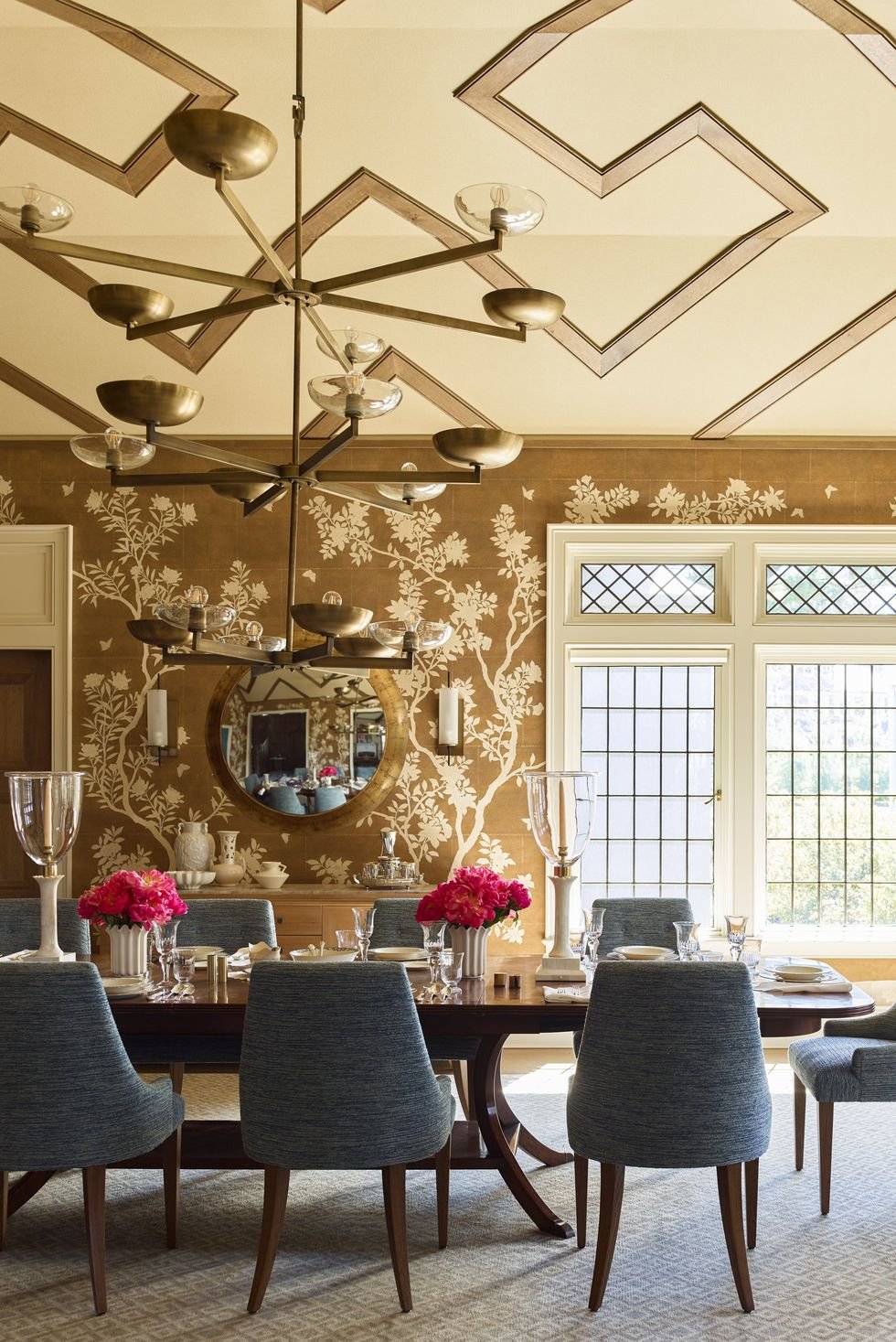
Design a space that draws intrigue and promotes conversation among guests, whether it’s with unique artwork, bold wallpaper, or custom furnishings. “Consider what is going to spark great conversation,” says Gideon Mendelson, founder of the Mendelson Group. “The uniqueness of this room partly comes from how we handled the faceted ceiling.” The team uniquely arranged paneling on the ceiling, adding texture and color to the space.
5 Inject Personality

A one-of-a-kind dining room makes a statement and leaves a lasting impression, but it should also evoke conversation and represent the personality of the homeowner. The color palette, artwork, or accessories in a space can reveal information about the homeowner, giving guests a more personalized dining experience. “Use your hobbies or interests as a guide to creating your unique space,” says interior designer Jennifer Fisher. “Anything that brings you joy can be placed on your walls.”
“Whenever possible, make aesthetic connections and personal references,” agrees Eberlein. A bold color palette in this dining room matches the bubbly, colorful personality of its owner. “We couldn’t resist using the multicolored bubbles-within-bubbles as a freeform, and a playful light fixture to round out the room,” she adds. Finally, every dining chair has been upholstered in a different color, and guests are encouraged to select the chair that best fits their character.
6 Experiment with Colors and Textures
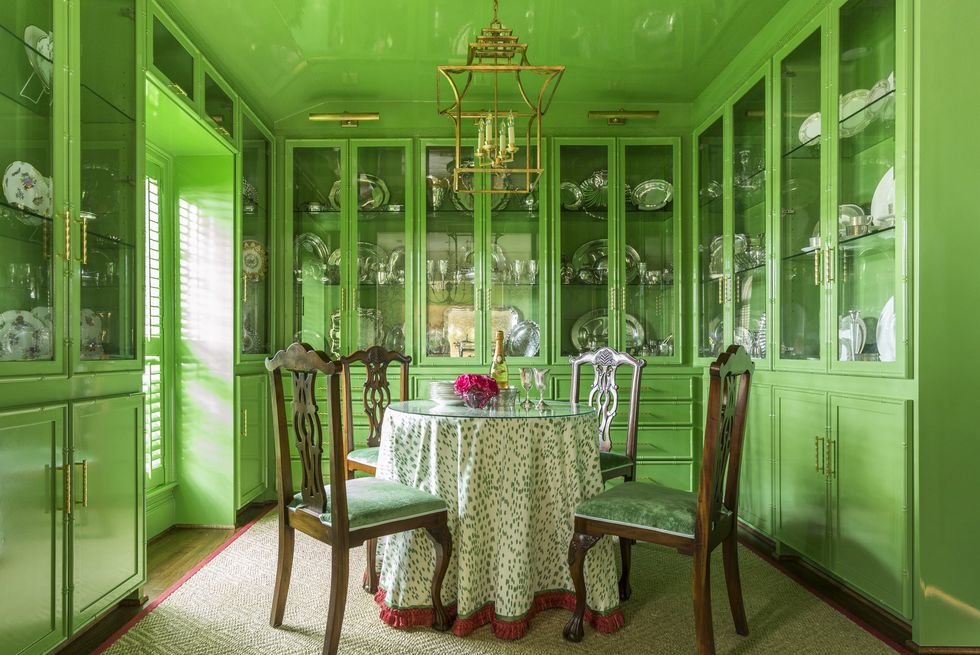
Unique colors and textures completely transform a space, and a great place to experiment is on the walls-whether with a bold paint or textured wall covering. In this case, Creative Tonic used a marine grade high-gloss paint finish by Fine Paints of Europe to enhance the drama of this space. “The juxtaposition of a traditional color palette executed in a contemporary way helps this space stand out from other dining rooms,” says Courtnay Tartt Elias, creative director and principal of Creative Tonic.
“Don’t miss an opportunity to create interesting textures and surfaces in the major horizontal planes: the floor, the table, and the ceiling,” adds Eberlein. “Because dining rooms usually have more hard surfaces and fewer fabric-covered ones, embellish these planes where one’s gaze naturally travels.”
7 Find the Right Lighting

Beautiful lighting fixtures can turn a typical dining room into an extraordinary one. Interior designer Paula Grace Halewski believes that lighting brings this room together. “The dramatic chandeliers, with geometric glass pendants that echo the shape of the room, complete the desired feeling of the space-awe,” she says. Everything comes together in the space-the shimmering wallcovering, the large artwork, and the eye-catching chandeliers.
“Lighting is hugely important,” adds Eberlein. Avoid downlights whenever possible, especially directly over chairs, to eliminate dark shadows on guests’ faces. Hang chandeliers low—28 to 34 inches above the table. Create a glow on the perimeter wall by using wall washers to highlight art and interesting surfaces. Introduce as many eye-level light sources as possible like sconces.
8 Incorporate Beloved Items
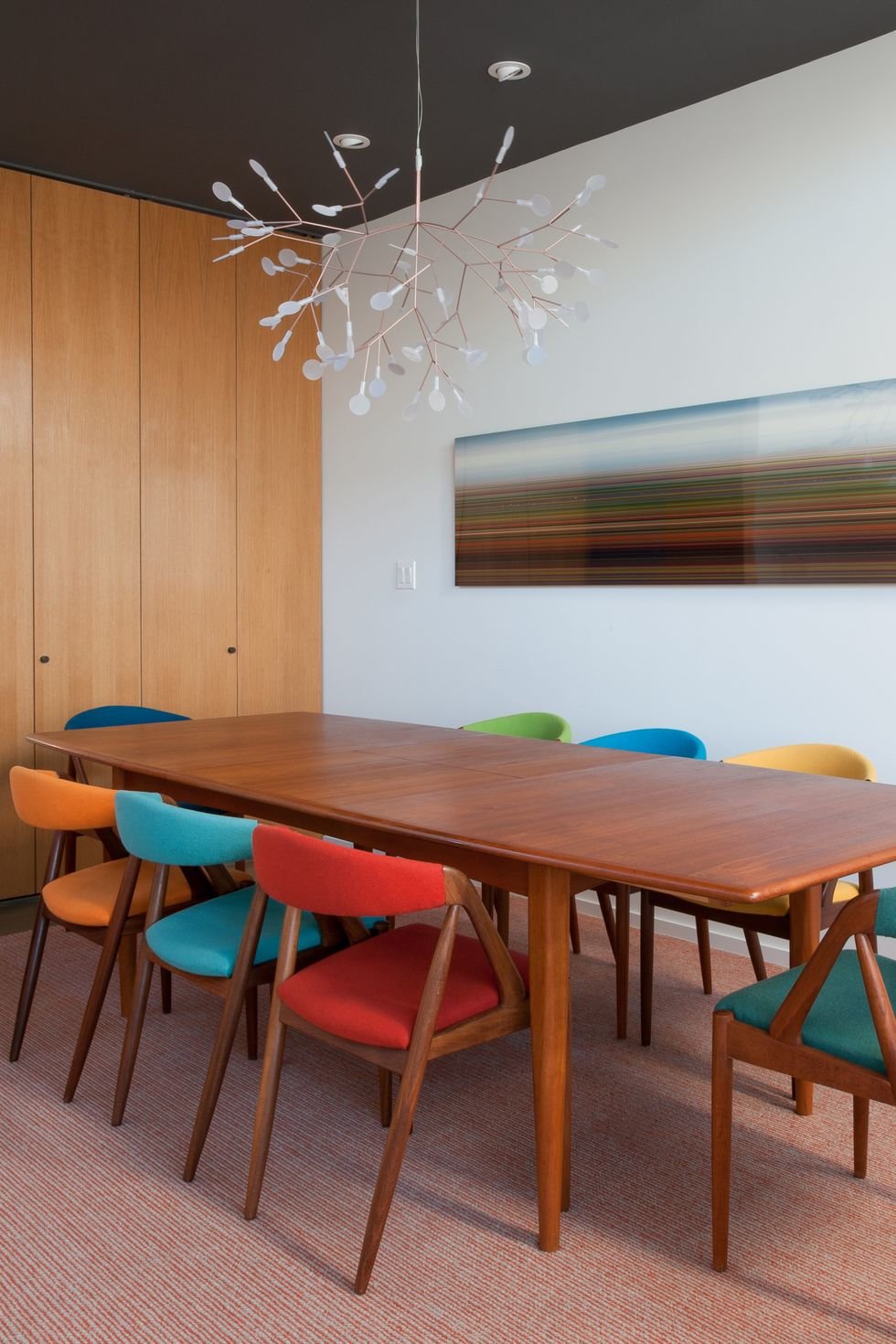
Reuse or repurpose beloved pieces from a previous space-whether it’s a piece of art, an inherited furnishing, or antique decorative items. “Begin with personal items,” says Ellen Nystrom of Nystrom Design. “It’s important to design a space that makes the host feel at ease so that they can extend that feeling to their guests.” This room features vintage Danish Kai Christensen chairs, which had previously belonged to the homeowners, but have been reupholstered to fit the new space.
9 Mix & Match
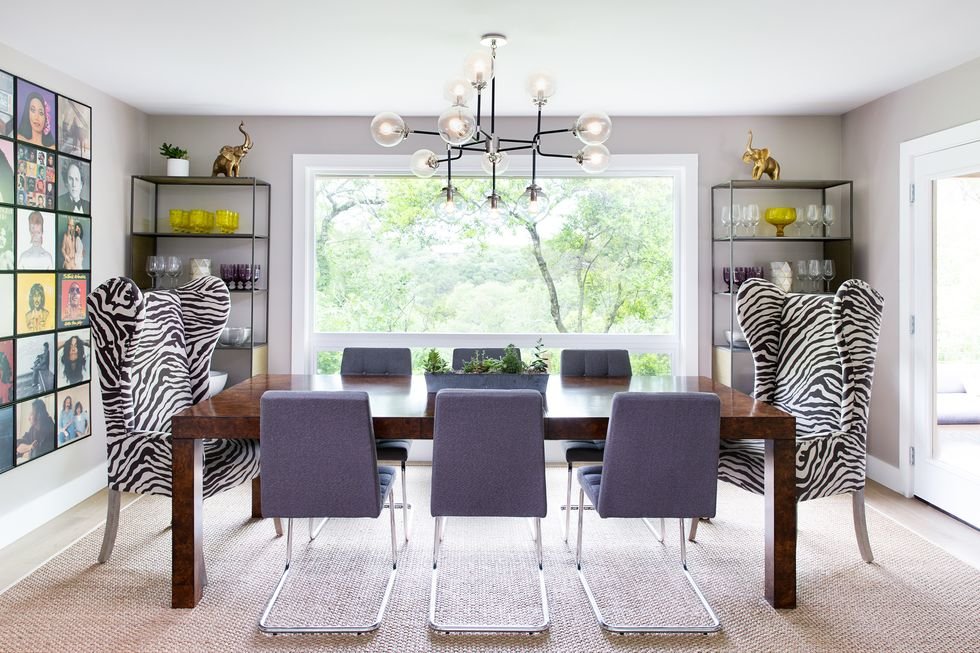
Mix and match furnishings, lighting, or artwork to give your space a creative style. “Mismatched furniture just makes everything better,” says Fisher. “It's less expected and creates interest, especially when the patterns are so different.” In this space, six neutral dining chairs are contrasted by two zebra print armchairs.
10 Shop Custom Furnishings
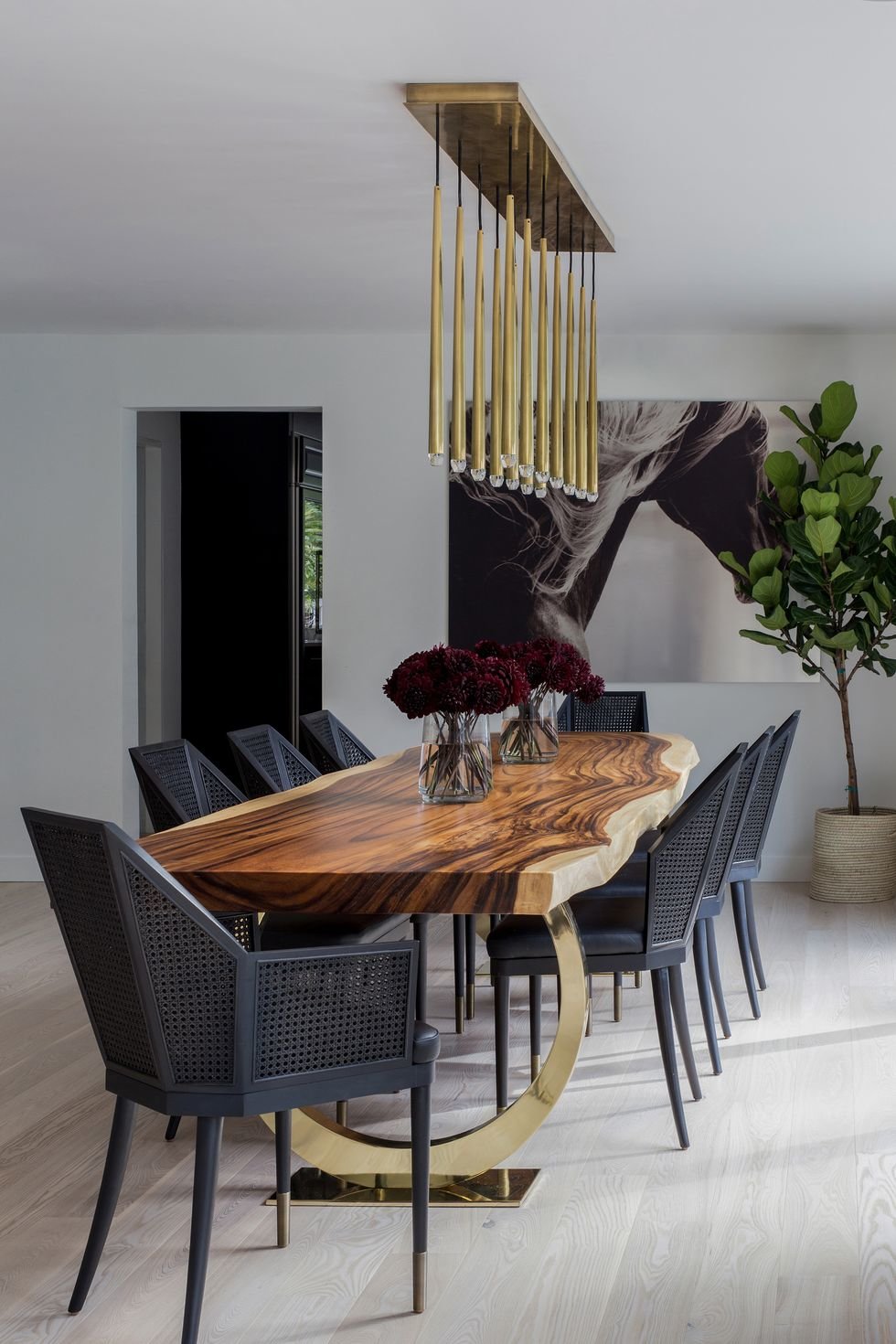
Ensure that your space is unlike any other when you use custom furnishings. A one-of-a-kind table or unique chairs will help a dining room stand out. The custom, live-edge wood table is the focal point of this space. “The floor plan of this house is very open and the dining table is truly in the heart of the home,” says Lisa Hershman of Abaca Interiors. “The live-edge Chamcha wood slab and brass legs provided a contrast that united both their styles and truly made the piece feel unique to the home.”
11 Ask For Help

Whether it’s consulting an architect, artist, or stylist, don’t be afraid to draw inspiration from other sources. A custom mural is a great way to ensure that a space is truly one-of-a-kind, as in this captivating space by interior designer Glenn Gissler. Artist Kevin Paulsen painted a unique mural that represents the history of Greenwich Village. “Dining in this room is totally transportive and magical, as the fantastical landscape creates deep space and a wonderful backdrop for diners,” says Gissler.



![A Tranquil Jungle House That Incorporates Japanese Ethos [Video]](https://asean2.ainewslabs.com/images/22/08/b-2ennetkmmnn_t.jpg)









